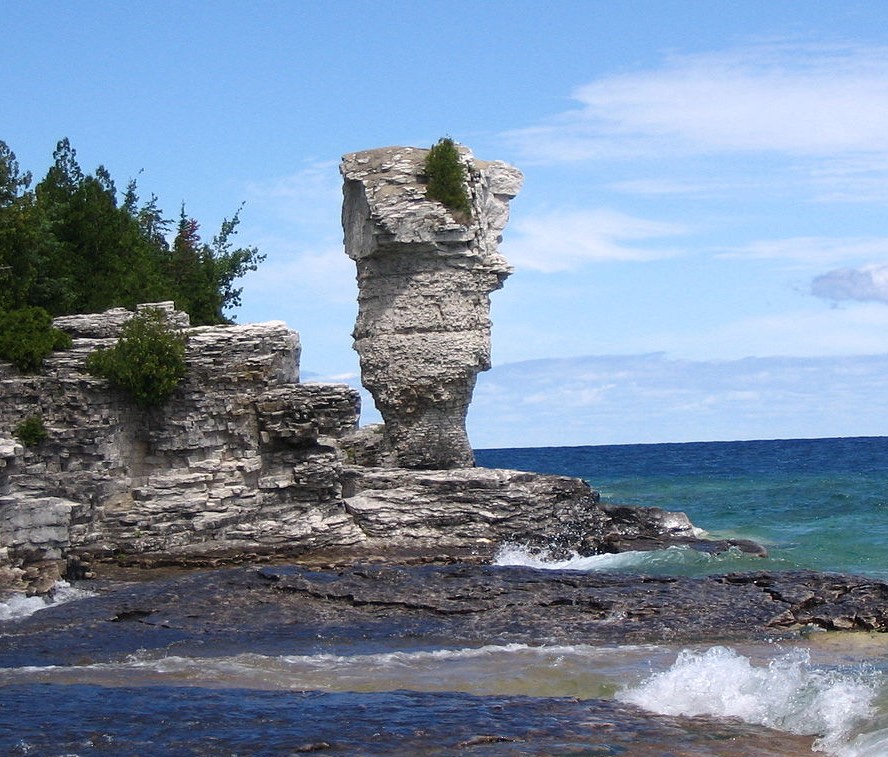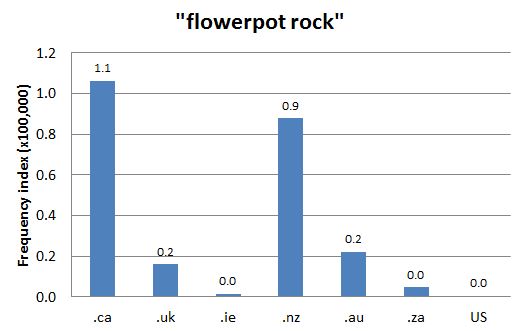DCHP-2
flowerpot flower-pot, Flower-pot, Flowerpot DCHP-2 (October 2016)
n. — Outdoors
a rock formation created by erosion; often used in the compound flowerpot rock. See Image 1.
Type: 3. Semantic Change — The term flowerpot refers to a tall rock formation that is particularly eroded near its base (see the 1967 quotation and image 1). Flowerpot rocks are detached portions of cliff faces that form as a result of wind and water erosion; they are found especially in Georgian Bay, Ontario, and the Bay of Fundy, between New Brunswick and Nova Scotia (see COD-2, s.v. "flowerpot" (2)). The earliest found attestation of flowerpot is in reference to Flowerpot Island (see the 1849 quotation), a national park located in the Bruce Peninsula, Ontario, and home to many flowerpot rock formations (see the 1949 and 1967 quotations). As seen in Chart 1, the term is most frequently used in Canada; note that many Australian and New Zealand sources (see Chart 1) are discussing Flowerpot Rocks, an island in American Samoa, and not a type of rock in general. Moreover, the majority of non-Canadian sources appear to be tourism sites referring to flowerpot rocks in Canada.
See also COD-2, s.v. "flowerpot" (2), which is marked "Cdn".References:
Images:

Image 1: Flowerpot Island, Georgian Bay, ON. Source: Wikimedia Commons. Photo: Borbrav
Chart 1: Internet Domain Search, 16 Jul. 2014
